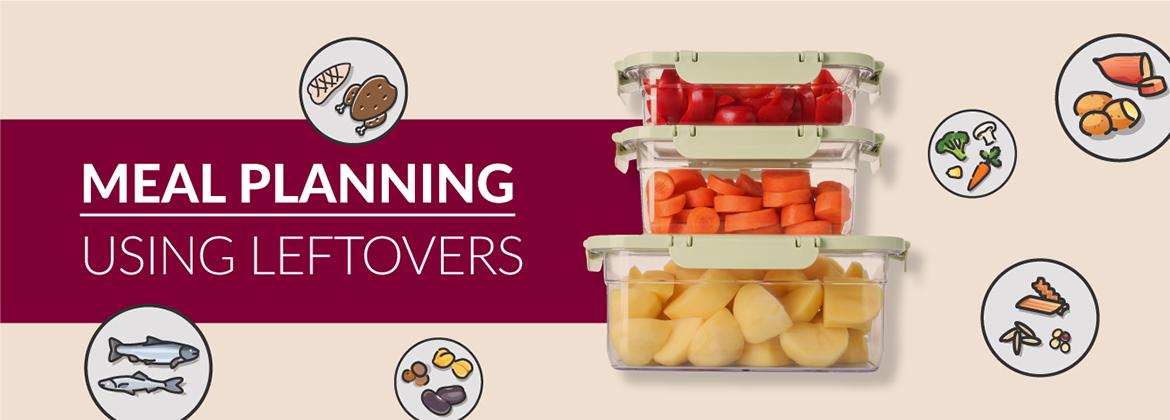Print or share this article
Using leftover prepared ingredients is a great way to save time in the kitchen. It can also help you reduce food waste.
On this page
Vegetables
Add leftover vegetables to a variety of meals. Try:
- mixing mashed potatoes into a soup
- adding roasted vegetables to use as a pizza topping
- grating leftover potato to make a pancake or add to a frittata
- adding steamed or sautéed vegetables to pasta, like in this macaroni and cheese with vegetables recipe
Legumes
Leftover cooked beans, chickpeas and lentils can be budget-friendly additions in both hot and cold meals. Unused cooked or canned legumes can also be frozen for later use. Try:
- adding to broth-based soups or stew
- adding to salads or wraps for a simple lunch
- making a dip such as hummus or black bean dip
- mixing with ground meat as in a Shepherd’s Pie or burger
- combining with rice, tomatoes, avocado, salsa and hot sauce for a quick and easy burrito bowl
Lean meats and poultry
Add leftover cooked chicken, turkey, lamb, or beef in salads, wraps, or sandwiches for a simple homemade meal. Try our turkey and veggie stuffed pita recipe as a starting point and use any cooked meat for the filling.
You can also try:
- slicing beef strips to make fajitas
- mixing in shredded chicken to a soup
- adding turkey to a stir-fry, chili, or casserole
Fish and shellfish
Leftover cooked fish and shellfish, such as white fish, shrimp, or salmon, create delicious meals. Try:
- serving in tacos with a lettuce slaw
- adding to a cold salad or in wraps
- making salmon sandwiches on whole grain bread
Whole grain foods
Whole grain foods come in many forms. This can be single whole grains, such as oats, quinoa, and brown rice or foods made with whole grains or whole wheat such as pasta and breads. You can transform them into new recipes, by:
- adding whole grain pasta to a soup
- using leftover rice to make a Mujadarrah (lentils, onions, rice)
- serving reheated brown rice, quinoa, or wild rice as a side dish
- using whole grain macaroni to make a homemade macaroni and cheese
- adding leftover rice to frozen vegetables, garlic, ginger, and soy sauce to make a stir-fry

